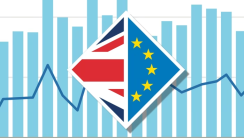
By their forties, most European investors have already begun thinking of creating a personal wealth fund – in other words, a source of regular income – to secure a comfortable life following retirement. One viable way to get such a source of income is to build an investment portfolio. George Kachmazov, managing partner at Tranio.com provides a breakdown of the essential steps towards building a strong portfolio.
Planning life after work is seldom a top priority, but building a robust investment portfolio is an excellent strategy for guaranteeing financial stability later in life. Your assets should generate regular yields and gain value under your possession. That way, you increase the likelihood of being able to sell it later or leave it to your loved ones.
The ideal investment portfolio contains a collection of assets varied by both type and location: this will shelter you from economic and political risks linked to any one asset class or country. For instance, investing in securities, metals and property will protect your assets against such risks.
The purpose of a portfolio is not to reap rapid returns, but to maintain your funds and save them from devaluation caused by inflation. For the best results, your revenue should always cover your expenses and you should always pitch in with managing the investment. The rationale is simple: you should have more time for your family, for traveling, for leisure and even for a business for your own pleasure — without worrying about the money.
Before building a portfolio, successful investors know their budget, risks and financing options. They also have a plan of action to maximise yields, hedge risks and manage their investments.
1. Initial budget
Investors usually start actively building investment portfolios when they have at least €1M available[TE1] , as a smaller budget would not generate enough return. In Europe, for example, the mean yield on residential property is 4%.
2. Investment strategy
In order to expand the portfolio, you must figure out how much you would like to invest in the long-term; you should also decide which investment vehicles to select, examples of which include property, bonds, stocks, etc. If, say, you are willing to allocate €2M in 2015 and want to achieve €13M in fifteen years, then you should estimate how much your portfolio should increase in value, as well as your current regular income. Most likely, you’ll need only to invest €300,000 per year to reach that €13M target. Alternatively, you could choose to make a few big investments over this period, like three properties worth €3–4M each (see my investment model here).
3. Risk assessment
Take note of the greatest and smallest risks facing your investments and construct your portfolio in an appropriate manner. When choosing real estate, for example, if you need stable returns, you’d do well to choose properties with long-term rental contracts and lower yields. However, if you don’t, then short-term lettings in holiday destinations with higher yields would be more advantageous. In addition, you could choose a property where the tenant’s lease is coming to an end.
4. Diversifying the portfolio
Location is a key risk, because the country you choose will define the safety, predictability and profitability of your investment. However, it’s neither easy nor simple to build or manage a portfolio with different assets in different countries. There are different legal and tax systems to consider, as well as different contractors to manage the asset. Notwithstanding, it’s best to invest in two different countries and two different asset classes. For instance, Russian citizens often live in their Russian property and buy income-generating real estate abroad.
Choose a country with a stable political system and a robust economy: prime examples include Austria, the UK, Germany, the US and France. For example, property in German cities gained 26% between 2010 and 2015 and is still expected to rise. To hedge the risks tied to European property, you should contemplate investing funds in financial instruments, like securities from firms outside the Eurozone, rather than looking for more property on the other continents.
5. Yields
Depending on the risk tolerance, the yield spread should be sufficient under current conditions. The risk profile can later be adjusted and the appropriate investment decisions can be made, if necessary. Standard commercial lettings yields in Europe are 5–6% per annum and that of residential property is only 4%, so if anyone promises you high yields, check out my other article to see why guaranteed yields do not exist.
6. Financing
Taking out a loan will give you the necessary leverage to boost the yield. Portfolio investments, unlike single purchases, get better terms on credit which increase yields. In Germany, for example, you can get a loan of up to 60% of the property value at 2% per annum if you are investing in real estate. So if the average rental yield is 6.5%, then the investment yield – given the loan – could be up to 8–10%. If the portfolio is not refinanced, liquidity can be quickly obtained without selling it by upping the degree of leverage. At the same time, banks will permit you to finance other investments atop your current assets.
7. Management
While it’s possible to build, manage and sell the portfolio independently, when you are investing abroad, it’s often better to hire a company specialising in managing property investments, as this saves time. As for your future tenants, quality tenants will minimise turnover and simplify property management.
8. Exit strategy and deadlines
There are two viable exit strategies: sell or transfer through inheritance.
— Inheritance: the portfolio grows in value over time – albeit moderately – and may be owned by a single family for more than 100 years. For that reason, you should make arrangements to transfer it with minimal tax expenses.
— Sale: if you need funds urgently (e.g. for your main business), choose a liquid asset that can be sold quickly (2–4 months) without a significant depreciation. The most effective way to reach this capacity is to acquire property in prime locations or multipurpose real estate.
However, if your goal is to build a personal wealth fund, you are probably not planning to make a sudden exit (excluding force majeure). This kind of portfolio requires long-term thinking and an investment strategy at least fifteen years in advance, as well as strong knowledge of the pertinent tax systems and potential risks.
George Kachmazov, Tranio.com






Author
George Kachmazov
George Kachmazov Founder and managing partner of Tranio George was born in Moscow on 5 March 1985. He received a law degree from Kutafin Moscow State Law University in 2006. From December 2007 to June 2010, George was the Executive Director at Optimism.ru managing day-to-day operations of the company. In 2010, George established and became the head of the Tranio project. He is responsible for the day-to-day and strategic management of the company. George Kachmazov, managing partner at Tranio.com Tranio helps build a bridge to the property our clients are seeking, by finding the best agency or developer in the target territory or market segment.